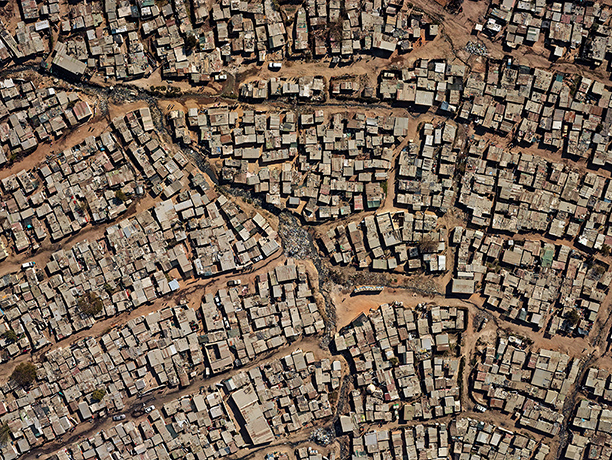One of my favorite pieces at the Armory Show was “White Slave,” which is a sculpture by Abastenia St. Eberle. The title is a euphemism for child prostitution. I liked it because of its blatant social and feminine message, and because of its theme of cruelty and restraint. This lack of freedom was important to Eberle, who was a progressive as well as a suffragette. I also found this piece meaningful because, although it comments on issues of the artist’s times, it transcends eras and can be a message for everyone in relation to many different topics. It can speak to someone personally of an internal struggle he or she is going through. It was eery how well Eberle was able to universally represent something so personal and emotional. Taking out the historical context, to me the naked girl represents our vulnerabilities, weakness, and insecurities laid out bare before us, and the man represents our demons. This was an extremely powerful and deep work of art that really stuck with me.
I also liked the portrait “Man on a Balcony” by Albert Gleizes. This painting strongly reminded me of DuChamp’s “Nude Descending a Staircase” because of their intentional distortion of reality and abstract qualities. The subject of Gleizes’ piece, though, is more discernible than DuChamp’s, but I still had to study it for a while to fully see it. I liked his use of distinct geometric shapes to create a whole image. Although at first glance this piece appeared fragmented to me, after analyzing it for a while, I found it to be harmonious and flowing. I think this is in part due to the colors of the painting, which are subtle and understated and universal throughout. Gleizes was a founder of Cubism, which is displayed in this work. I find paintings that illustrate Cubism interesting, not only for their aesthetic qualities, but also because of what they represent. Cubism emerged as a reaction against classicalism and was used as a mode of expressing individuality and rebelling against the norm. In a way, it was a means of attainting freedom. I think this is important because freedom is an age-old theme and goal that we are still trying to grasp today. That makes these paintings very relatable and meaningful.
In gallery H, the “radical” gallery of the Armory Show, there was a wall covered with written responses to the original exhibition. There were the words “ugly,” “vulgar,” “hideous,” “revolting,” “crude,” and many other negative remarks. I found these comments interesting because it shows how evolutionary our society is, especially in terms of art. In modern times, the pieces on display at the Armory Show are considered creative and are lauded for their artistic individuality and expression, a far cry from the backlash this same exhibition created in 1913. This made me curious about how art today will be received in a future time; whether it be paintings, music, or performances, will art that is considered radical be accepted and praised?












 The photo which is shown to the left, is the view of Diepsloot a settlement in South Africa. Through the picture you can see the living conditions that the inhabitants withstand; no proper roads, shacks made of any material found. This picture was the object of my fascination particularly because of the strong resemblance it has to the Dominican Republic, where my parents were born and raised. My initial thought was actually of whether or not it was DR. Regardless of the place pictured, looking at Hugo’s piece of art caused me to reminisce about all the times I’ve traveled to visit my family and how similar the living conditions are between the two places that are on nearly opposite sides of the globe.
The photo which is shown to the left, is the view of Diepsloot a settlement in South Africa. Through the picture you can see the living conditions that the inhabitants withstand; no proper roads, shacks made of any material found. This picture was the object of my fascination particularly because of the strong resemblance it has to the Dominican Republic, where my parents were born and raised. My initial thought was actually of whether or not it was DR. Regardless of the place pictured, looking at Hugo’s piece of art caused me to reminisce about all the times I’ve traveled to visit my family and how similar the living conditions are between the two places that are on nearly opposite sides of the globe.






